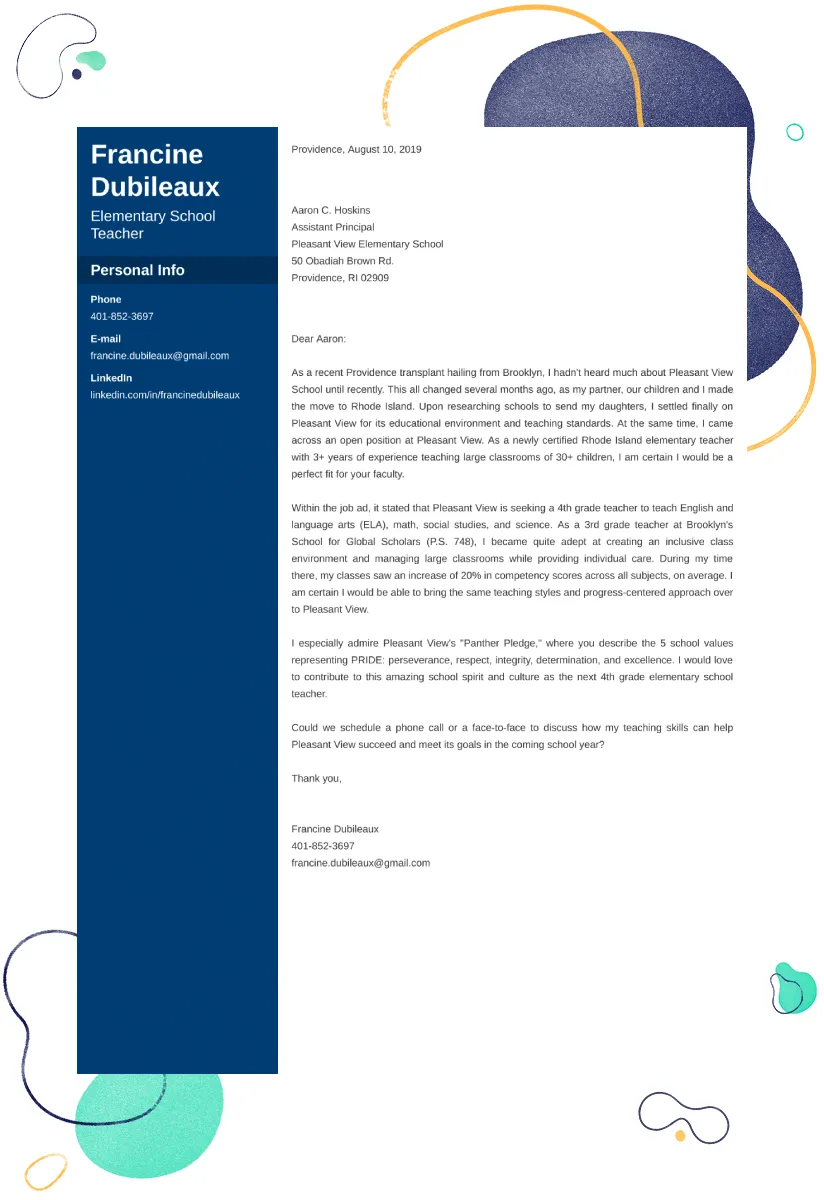Landing your first teaching job can feel like a daunting task. One of the most critical components of a successful job application is a well-crafted cover letter. For first-year teachers, this document serves as a crucial introduction, showcasing your potential and enthusiasm to prospective employers. This guide will provide you with five essential tips to craft a compelling cover letter that grabs attention and highlights your qualifications, increasing your chances of securing an interview and ultimately, your dream job. Follow these guidelines, and watch your cover letter transform from a necessary chore into a powerful tool in your job search arsenal. Let’s get started on the path to teaching success, one well-written cover letter at a time.
Crafting Your Cover Letter
The initial step in creating a standout cover letter is understanding the core components. This section covers the fundamental elements of a strong cover letter that addresses the specific requirements of the teaching profession and the nuances of a first-year teacher’s profile. Crafting a cover letter is more than just listing your skills it’s about weaving a narrative that showcases your personality, experience, and genuine passion for teaching. A well-crafted cover letter is your chance to set the stage for your application, and highlight what makes you unique and well-suited for the position. Ensure your cover letter stands out from the competition by focusing on the areas that matter most to hiring managers.
Highlighting Your Qualifications
As a first-year teacher, you may feel you lack the extensive experience of seasoned educators. However, you have unique qualifications. Focus on your academic achievements, certifications, and any specialized training. Highlight relevant coursework, such as educational psychology or classroom management, and any professional development workshops. If you hold any special certifications (e.g., ESL, special education), ensure those are prominent. Be specific and provide examples, if possible. Instead of just stating ‘knowledge of classroom management’, describe how you implemented a specific strategy and its positive outcomes.
Showcasing Your Relevant Experience
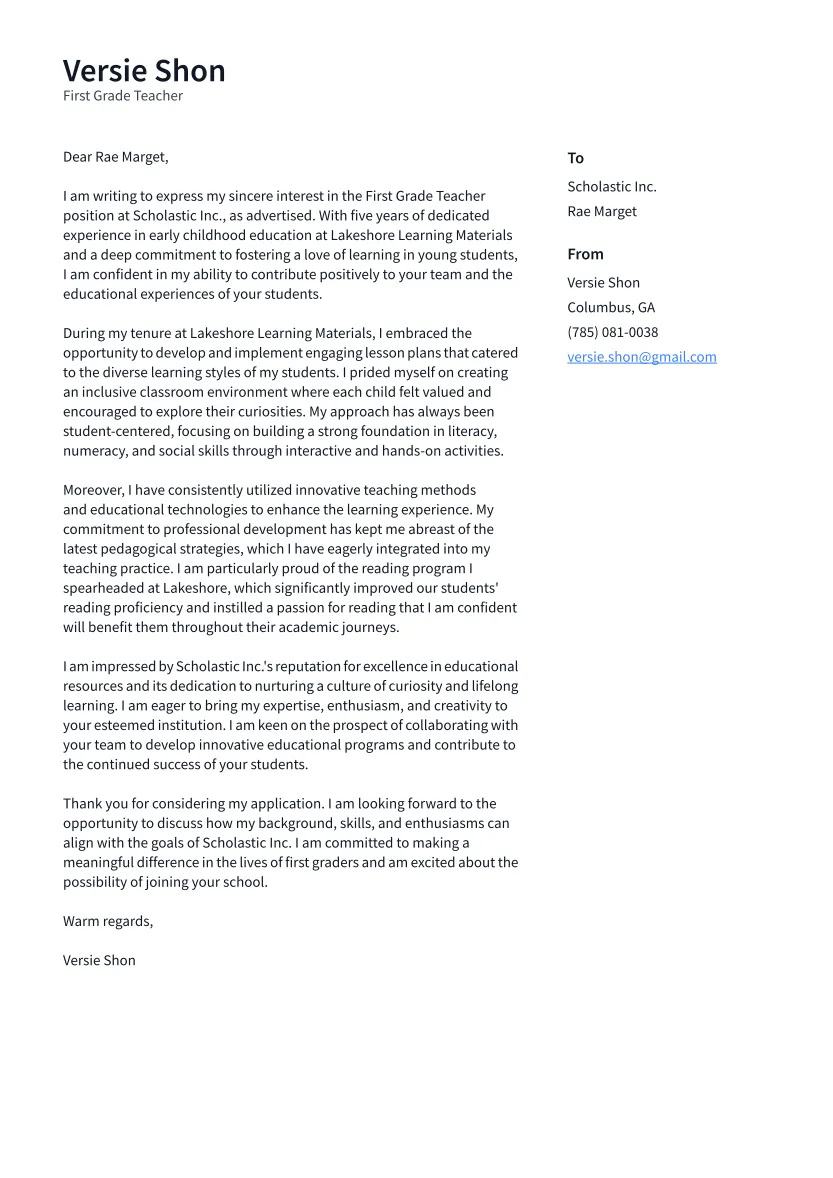
Even without years of classroom experience, you likely have relevant experiences. Consider student teaching, volunteer work, tutoring, or mentoring roles. These experiences demonstrate your ability to work with students and your commitment to education. Provide detailed descriptions of your responsibilities and accomplishments in these roles. Quantify your achievements whenever possible for instance, ‘Tutored 10 students, resulting in a 20% increase in their test scores’. If you participated in any extracurricular activities or leadership roles, mention those, as they showcase your well-roundedness and dedication.
Emphasizing Your Passion for Teaching
Your passion for teaching is your greatest asset. Demonstrate your enthusiasm through your writing style and the examples you provide. Share a compelling story about why you chose to become a teacher, and what inspires you about education. Explain your teaching philosophy and how you approach student learning. Mention any innovative teaching methods or technologies you are excited to use. Convey your excitement about the specific school or district, and explain why you are eager to contribute to their community. Passion is contagious, and it can make a significant difference in the eyes of a hiring committee.
Structuring Your Cover Letter Effectively
A well-structured cover letter is easy to read and allows the hiring manager to quickly understand your qualifications and enthusiasm. The following sections guide you through the key elements of an effective cover letter, ensuring that each part serves its purpose and contributes to your overall objective of securing an interview. Proper structure helps in presenting your information logically, allowing the reader to navigate your key skills and experiences with ease.
The Introduction Paragraph
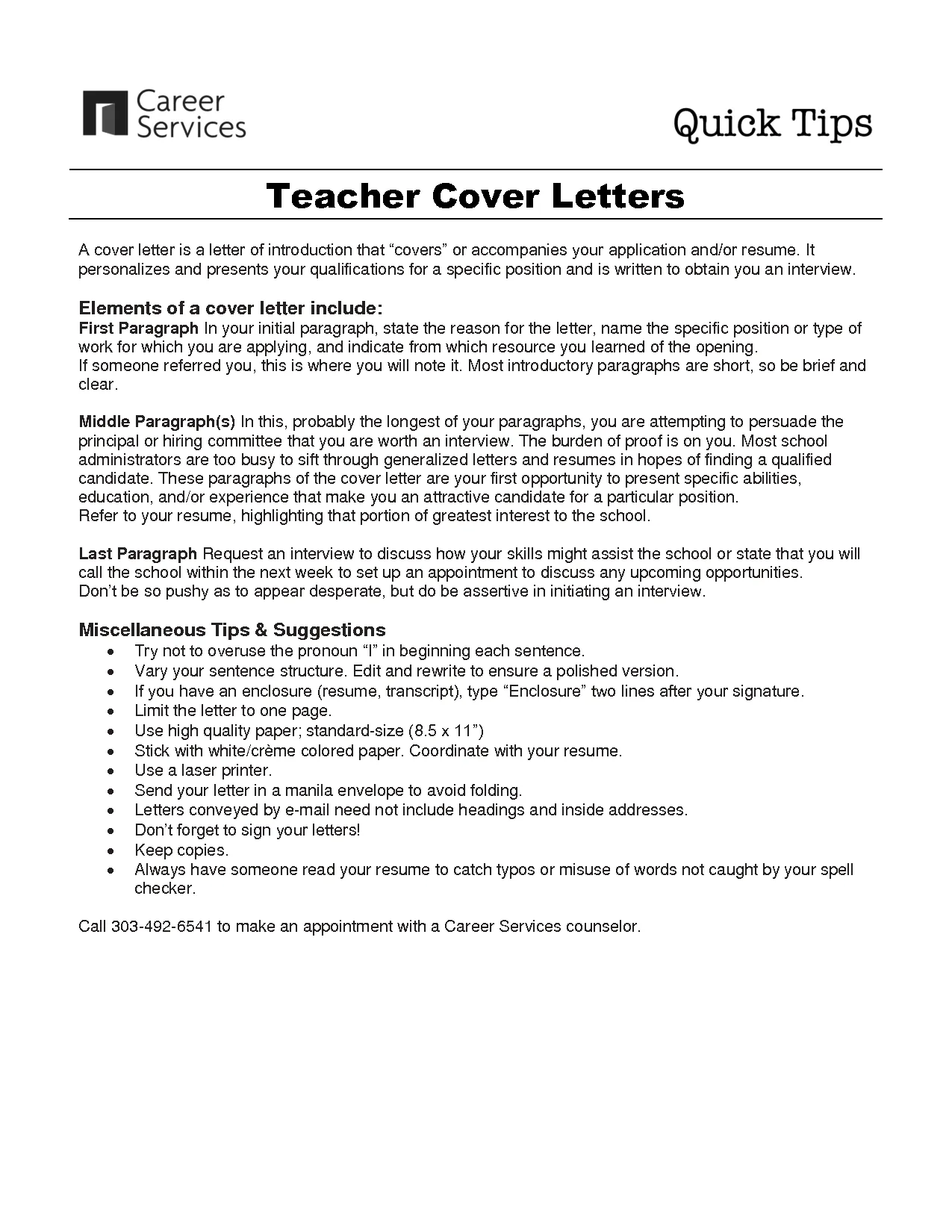
The introduction is your first opportunity to make a strong impression. State the position you are applying for and where you found the job posting. Briefly introduce yourself and mention your most relevant qualifications. Aim to grab the reader’s attention immediately. Show enthusiasm and state your purpose for writing a cover letter. Make sure your opening paragraph is clear, concise, and directly relevant to the job. State your interest in the role and the school, making sure the reader understands what you are looking for. The goal of the introduction is to hook the reader and make them want to learn more about you.
The Body Paragraphs
The body paragraphs are where you provide details and evidence. Use two to three paragraphs to elaborate on your qualifications and experiences. Each paragraph should focus on a specific aspect, such as your teaching philosophy, classroom management skills, or experience with specific student populations. Use concrete examples to support your claims. For each point you make, provide an illustration or anecdote that demonstrates your abilities and your skills. Try to tailor these paragraphs to the job description and school requirements.
The Conclusion
The conclusion should restate your interest in the position and thank the hiring manager for their time. Express your eagerness to interview and reiterate how your skills and experiences align with the school’s needs. Provide your contact information and any other relevant details for follow-up. A strong conclusion leaves the reader with a positive impression and reinforces your suitability for the role. A professional closing reinforces your enthusiasm for the position and the school.
Formatting and Proofreading
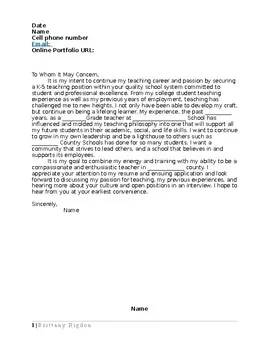
The appearance of your cover letter is as important as its content. Properly formatted and error-free writing shows professionalism and attention to detail. These tips help you present your application in the best possible light and to avoid mistakes that can harm your chances. Poor formatting and grammatical errors can undermine the impact of your content, and a polished cover letter communicates that you are serious about the opportunity and that you pay attention to details. Don’t rush through the formatting and proofreading stages; your diligence will be rewarded.
Choosing the Right Font and Format
Select a clean, readable font such as Times New Roman, Arial, or Calibri. Use a font size between 10 and 12 points. Maintain consistent formatting throughout the document, including spacing, margins, and indentation. Use a professional header with your contact information. Ensure your name and contact information are at the top of the document. Use clear and consistent formatting, making it easy to read. These formatting choices reflect well on your professionalism, and create a positive first impression.
Proofreading for Errors
Proofreading is crucial. Errors can undermine your credibility. Always proofread your cover letter multiple times, paying attention to grammar, spelling, and punctuation. Use a grammar checker, but do not rely on it entirely; it may miss context errors. Read your cover letter out loud to catch any awkward phrasing. Ask a friend or mentor to review your cover letter for a fresh perspective. A well-proofread cover letter reflects positively on your professionalism and attention to detail, while errors can be very distracting and might make the hiring manager question your skills.
Tailoring Your Cover Letter
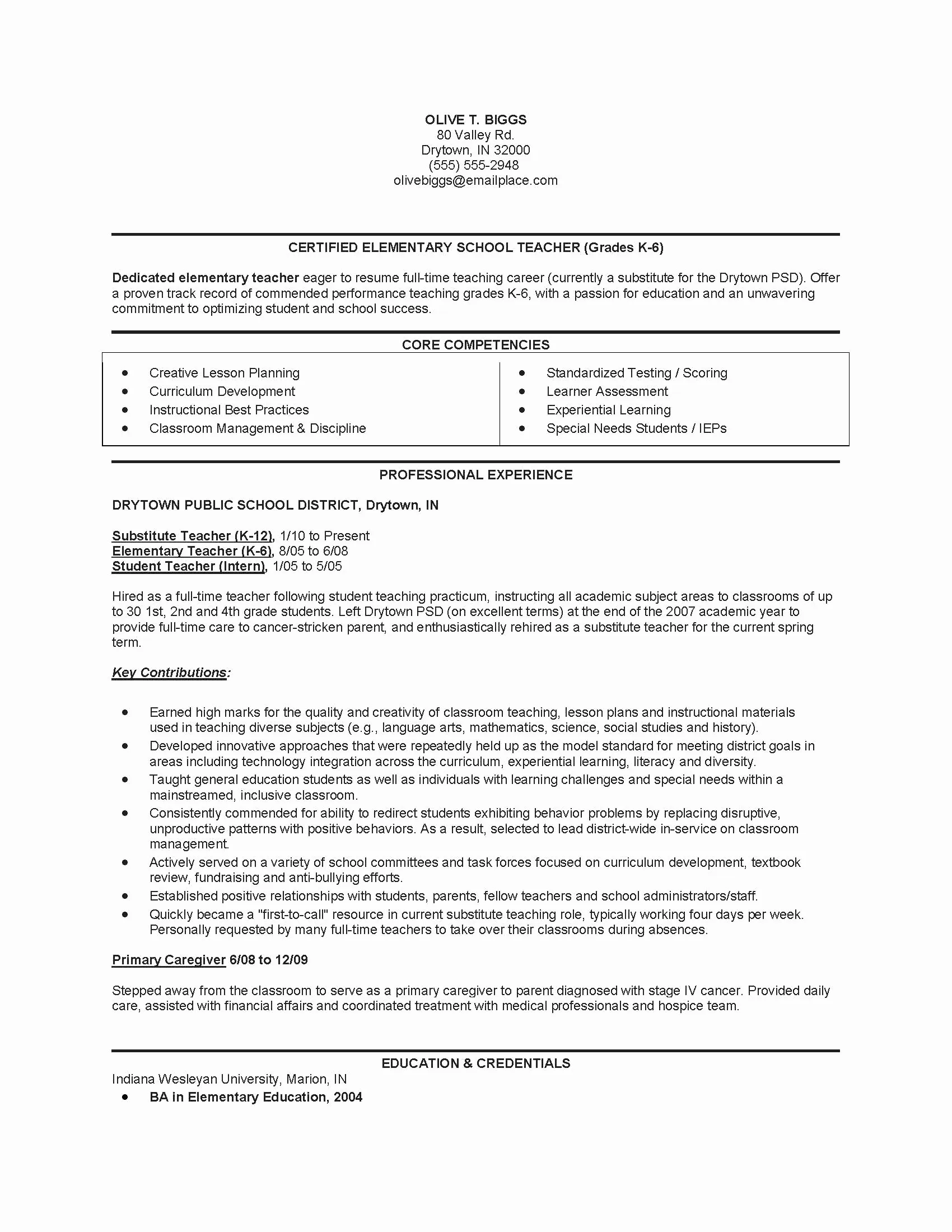
A generic cover letter is unlikely to impress. Tailoring your cover letter to each specific job application is essential. This means researching the school, understanding the position, and using keywords effectively. This demonstrates that you have taken the time to prepare a thoughtful, focused application. Show your interest in the specific school or district by aligning your skills and experiences to match their values, mission, and needs. A tailored cover letter shows your enthusiasm and suitability for the specific role.
Researching the School and Position
Before you start writing, research the school and the position. Visit the school’s website, read its mission statement, and understand its values. Look for information about the school’s demographics, academic programs, and extracurricular activities. Review the job description carefully and identify the key requirements and preferred qualifications. This research will help you tailor your cover letter to the specific needs of the school and demonstrate your genuine interest in the role and institution.
Using Keywords Effectively
Incorporate keywords from the job description throughout your cover letter. Hiring managers often use applicant tracking systems (ATS) that scan for these keywords. Make sure your skills and experiences align with the keywords used in the job posting. Use keywords naturally in your writing; do not stuff them in artificially. This will help your cover letter get noticed and highlight your qualifications. Focus on incorporating the specific terms and phrases that the school is looking for. Incorporating the right keywords will make your application more visible and more likely to stand out to the hiring committee.
Following Up
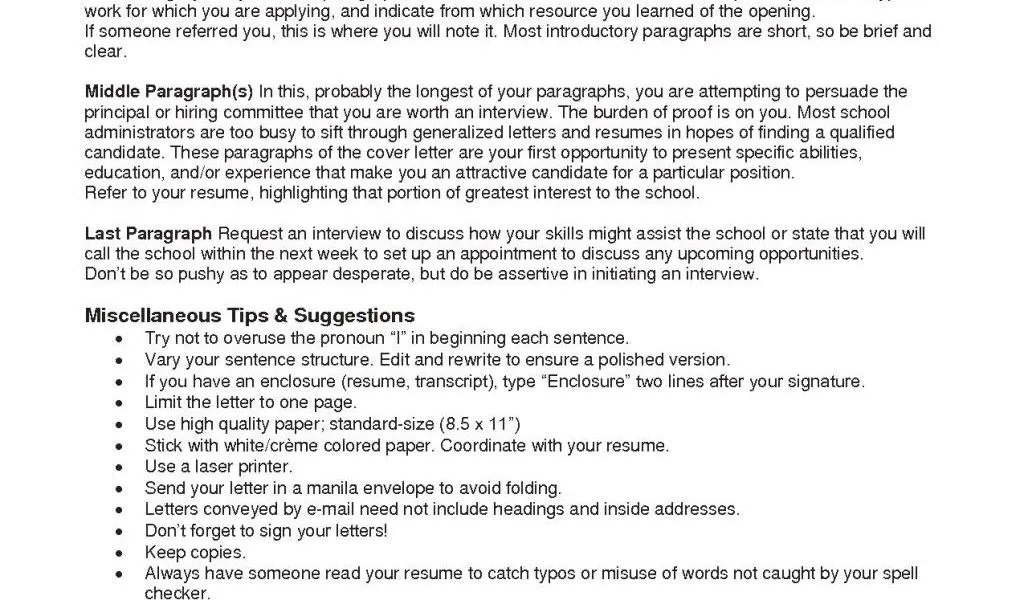
After submitting your cover letter and resume, follow up with the hiring manager. Following up shows your continued interest in the position. You can follow up a week or two after submitting your application. Send a brief email or make a phone call to reiterate your interest and confirm they received your application. This small gesture may set you apart from other candidates and demonstrate your dedication to the position. Be professional and concise, and express your appreciation for their time and consideration.
In conclusion, crafting a compelling cover letter is a critical step in your journey to becoming a first-year teacher. By focusing on your qualifications, showcasing relevant experience, emphasizing your passion, structuring your letter effectively, and tailoring it to each application, you can significantly increase your chances of landing an interview. Don’t forget the importance of formatting, proofreading, and following up. These five tips are designed to assist you in presenting a professional and persuasive cover letter that will get you noticed. By following these guidelines, you’ll be well on your way to securing your first teaching position and starting your rewarding career. Good luck with your applications, and remember to let your passion and potential shine through.
